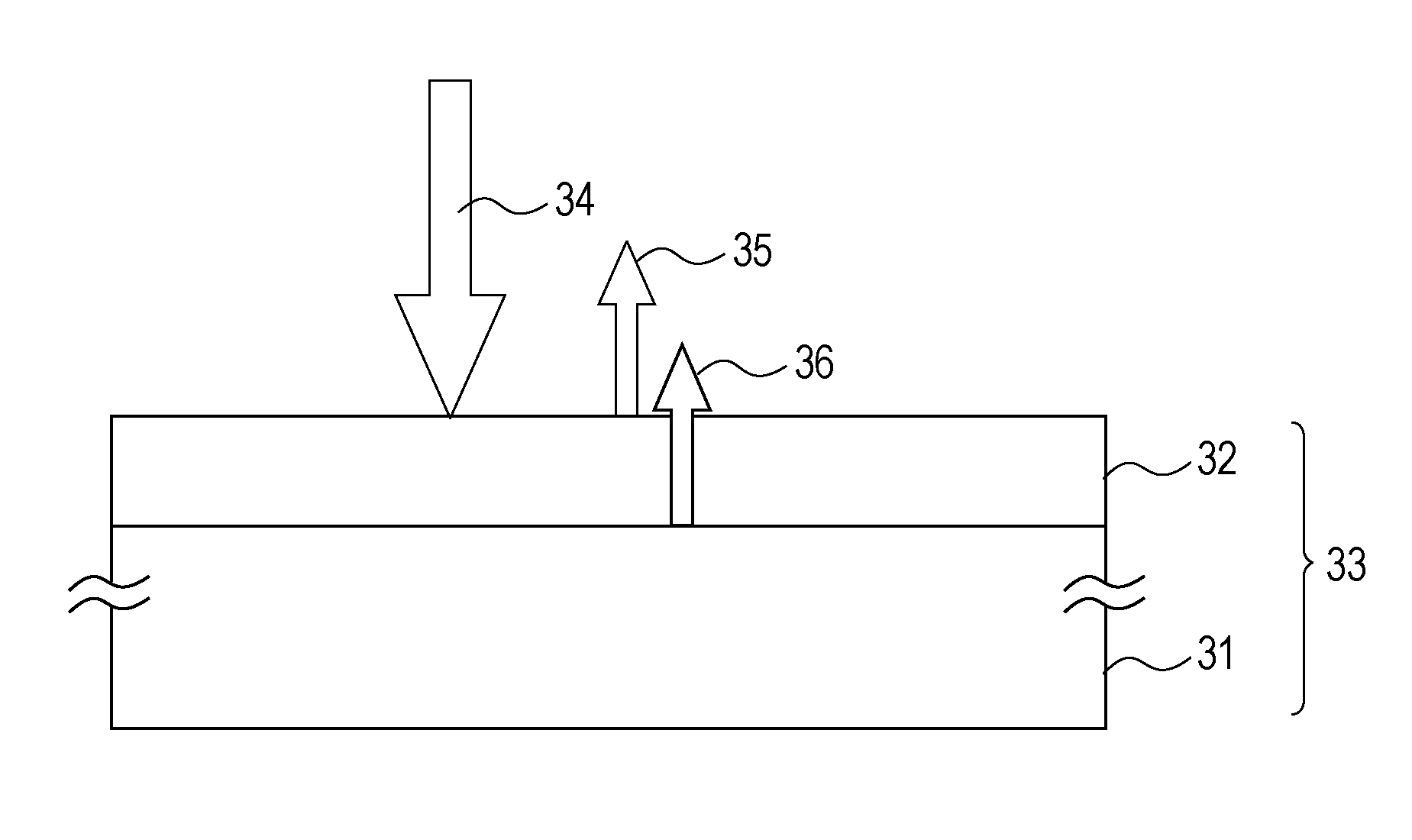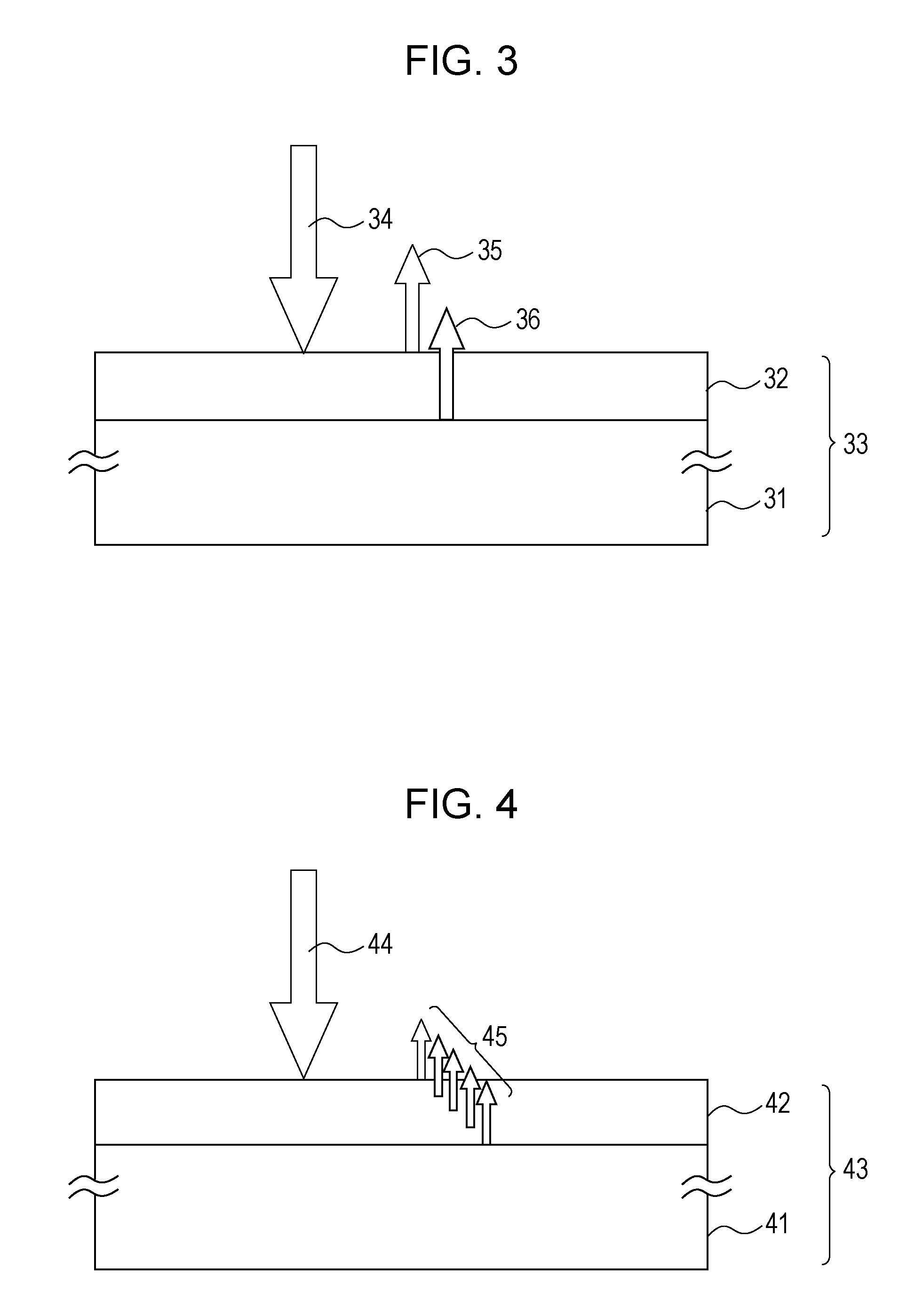Optical element, optical system including the optical element, and optical apparatus including the optical system
a technology of optical elements and optical elements, applied in the field of optical elements, can solve the problems of material deposition, loss of energy, and difficulty in obtaining a thin film with a desirable refractive index
- Summary
- Abstract
- Description
- Claims
- Application Information
AI Technical Summary
Benefits of technology
Problems solved by technology
Method used
Image
Examples
first embodiment
[0041]FIG. 1 illustrates reflectivity characteristics of an optical element provided with a thin film according to a first embodiment of the present invention. The horizontal axis plots wavelengths and the vertical axis plots reflectivities. Regarding the reflectivity characteristics of the optical element, a peak value of the reflectivity is located at a wavelength of 550 nm. The reflectivity at the peak value is 0.40%. Reflectivities with wavelengths of 400 nm and 700 nm at both ends of the usable wavelength range are respectively 0.15% and 0.28%.
[0042]This embodiment illustrates a graded layer having a reflectivity that is gradually (i.e. continuously or progressively) decreased from the substrate side towards an outer surface of the graded layer. FIG. 2 illustrates an example of an optical structure provided with a thin film on a surface of a substrate. Reference numeral 21 denotes a substrate, 22 denotes a thin film, 23 denotes an optical element, and 24 denotes incident light....
second embodiment
[0061]FIG. 13 illustrates reflectivity characteristics according to a second embodiment of the present invention. The horizontal axis plots wavelengths and the vertical axis plots reflectivities. Regarding the characteristics, a peak value of the reflectivity is located at a wavelength of 500 nm. The reflectivity at the peak value is 0.18%. Reflectivities with wavelengths of 400 nm and 700 nm at both ends of the usable wavelength range are respectively 0.06% and 0.03%. The values satisfy all the aforementioned conditions (1) to (4).
[0062]The configuration of the second embodiment is shown in FIG. 12. Reference numeral 121 denotes a substrate, and 122 denotes a petaloid structure layer formed of a structure that is smaller than the wavelength of light to be used. The refractive index gradient of the structure layer is shown in FIG. 14. The substrate is a glass member with a refractive index of 1.583 for the d-line. Regarding the refractive index gradient, it is found that the refract...
PUM
| Property | Measurement | Unit |
|---|---|---|
| Fraction | aaaaa | aaaaa |
| Wavelength | aaaaa | aaaaa |
| Optical reflectivity | aaaaa | aaaaa |
Abstract
Description
Claims
Application Information
 Login to View More
Login to View More - R&D
- Intellectual Property
- Life Sciences
- Materials
- Tech Scout
- Unparalleled Data Quality
- Higher Quality Content
- 60% Fewer Hallucinations
Browse by: Latest US Patents, China's latest patents, Technical Efficacy Thesaurus, Application Domain, Technology Topic, Popular Technical Reports.
© 2025 PatSnap. All rights reserved.Legal|Privacy policy|Modern Slavery Act Transparency Statement|Sitemap|About US| Contact US: help@patsnap.com



